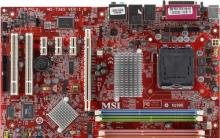A Firefox user profile is the collection of all user settings and confidential data. Simply put, there are all sorts of passwords, bookmarks, settings, etc. are recorded in several special files and stored in a separate folder. This is the profile.
Often, ordinary users and beginners simply do not know that there can be more than one in the profile browser. And each of them can be customized individually. Starting from logins and passwords of social network accounts and ending with the start page, design theme, etc. People more often for this purpose begin to download and install browsers from different manufacturers. Thus creating additional inconvenience. Therefore, multiple Firefox user profiles on the same machine may be needed for two reasons:
- There are technical issues with Firefox's main "work" profile. Then creating a new profile is part of the diagnosis, as well as a possible solution to the problems that have arisen.
- Several people have access to the computer with their own tastes and preferences regarding settings.
Create a new profile.
To create 2-3 Firefox profiles and freely switch between them, you need to slightly edit the browser shortcut. For this you should:

Open the properties of the “Mozilla Firefox” shortcut (Right mouse click - “Properties”).

In the window that appears, the line “C:\Program Data\Mozilla Firefox\firefox.exe” must be appended with a space “–p”. And click OK. It should turn out like this:
“C:\ProgramData\Mozilla Firefox\firefox.exe” -p
Now launching the browser using this shortcut will open the profile manager window.

For most users, their profile is called "default" ie. - "default". Further:
1. You need to click on the "Create" button. With interest, read the explanations from Firefox and click “Next”.

2. Type in the name of the new profile and click “Finish”.
Notes:
- You can leave the proposed name “Default User” as it is, but in order to increase security, and just for convenience, it should be changed.
- The profile name can be set in Russian. But it is recommended - in Latin, because. this will help avoid a number of problems in the future.
- You can set the storage folder yourself (blue arrow in Figure 3), but this is not necessary.

Create shortcuts for each profile.
If you leave the browser shortcut with this “firefox -p” add-on, then every time you start the program, you will need to select the desired profile with a mouse click and click “Launch Firefox”. In this case, uncheck the “Do not ask at startup” checkbox.

Otherwise, the next time you start the program, Firefox will not “ask” anything, but will open the same profile.
But! If the machine is used by people of different levels of computer knowledge (mothers and grandmothers are different there), then it is better to create separate shortcuts for each profile. If, for example, Vasya and Masha work on a PC, then you need:
- Create a copy of an existing shortcut. Rename for convenience to “Vasya. Using the method above, open its properties and after “firefox.exe -p” add (separated by a space) the username Vasya:
“C:\ProgramData\Mozilla Firefox\firefox.exe” -p Vasya - Repeat these steps for user Masha.
Note.
Pay special attention to the correct placement of spaces in the shortcut paths! All keys, like -p - enter in Latin!
As a result, there will be three shortcuts on the desktop:
– Label “Mozilla Firefox”. It should be left for the convenience of further work with creation, etc. browser profiles.
- Vasya. This shortcut will launch Firefox immediately with the user profile Vasya. With his favorite home page set, bookmarks, browsing history, saved passwords, and more.
– Masha. This shortcut will launch a browser with Masha's personal data and settings.
Such a simple technique can help in solving computer and family problems, in the spirit of “Who again erased my password to Odnoklassniki ?!”. In addition, this action increases the security of storing personal data for all browser users.
What are profiles in Mozilla Firefox? This is a set of settings, user information. Firefox can be run with a specific profile, and then Firefox will have its own settings, plugins, external display, and more. It's almost like having Firefox installed and configured separately.
This way you can create profiles for different users or for one user, but for different tasks.
For example, I needed profiles:
- for everyday work on the Internet - social networks, authorization on the necessary sites, necessary bookmarks, your own history of visiting;
- for work - this is authorization, remembering authorization on specific sites. Authorization of other accounts in social networks and so on.
- for mom 🙂 Link to classmates in bookmarks in the most prominent place and authorization with memorization on the same site 🙂
Application may vary.
So what exactly is stored in profiles:
- Bookmarks and browsing history
- Passwords
- Special site settings
- search engines
- Personal dictionary
- Autocomplete fields
- Cookies
- Security certificate settings
- File type management
- User styles
Also, for each profile, you can set your own design and add-ons installed in Firefox in the current profile will also be available only in this profile.
How to manage Firefox profiles?
To do this, you need to start Firefox with the parameter. You can do this, Start -> Run and then enter (before that, you will need to close all open Firefox windows, otherwise executing the following command will simply launch the browser, not the profile manager)
firefox.exe -ProfileManager


I just want to note that the checkboxes in the window affect the current launch of the browser. Work offline - means that the browser will work offline (with)CEP.
If you select any of the profiles and check the "Do not ask at startup" checkbox, then the next time you start the browser without specifying a profile, it will start with the selected profile. If you uncheck the box, then every time you start the browser, you will be prompted to select a personal profile. If you checked the “Do not ask at startup” checkbox, but after that you needed to change the profile loaded by default, then you will need to start the profile manager again, as described above, and set the necessary settings.
Where is the profile stored? In my Windows XP files are stored here. One profile - one folder, for example zwv9xv8q.lampdevru.
C:\Documents and Settings\username\Application Data\Mozilla\Firefox\Profiles
C:\Documents and Settings\username\Application Data\Mozilla\\Profiles |
You can also open the profile folder by doing the following: select the menu item Help -> Troubleshooting Information or in a new tab in the address bar we write about: support, the page loads, we see the following

How to start Firefox with the right profile?
To do this, the executable file must be launched with the parameter -p profilename. For example, you can create a shortcut and write the following in the "Object" property
Firefox has its own profile system that works like a Chrome user account switcher. Each profile has its own bookmarks, settings, extensions, browser history, cookies and other data. For example, you can create a profile for work and a separate profile for personal use.
Mozilla hides Firefox's profile manager instead of making it a prominent part of the interface like Chrome does, for example. But, if you want to use different browser profiles with your own settings and data, Firefox allows it.
Containers with multiple accounts in Firefox

Mozilla has another, more streamlined solution if you just want parts of your browser to be separated from each other. The extension is called "Firefox Multi-Account Containers" and it's made by Mozilla themselves. This extension allows you to select a "Container" for each open tab. For example, you can run tabs in the Work container when you are working and the Personal container when you are not working. So, if you have a separate set of work accounts and personal accounts, then you can simply switch between containers without logging in and out of each website.
While this does not completely replace the need for profiles (bookmarks, browser history and extensions are shared between containers), it does allow you to have separate login state and cookies for each container.
How to create profiles and switch between them
Mozilla Firefox now allows you to manage profiles while you work, without having to use the Profile Manager available in older versions. To access this feature, type " about:profiles' in the Firefox address bar, and then press Enter. You can bookmark this page for easier access in the future if you wish.
If you haven't viewed Firefox profiles before, you'll probably be using the "default" profile.
To create a new profile, click the "Create a new profile" button.

In the Profile Wizard window that appears, provide a descriptive name for the new profile so you can remember what it is for. For example, you can name it "Work profile" if it is intended for work.

To start Firefox with a new profile, first click the "Set as default profile" button in the profile. Once it becomes your default profile, close all open Firefox browser windows and restart Firefox. It will start with the default profile selected.
To switch back to a different profile, go to profiles again: click "Set as default profile" for the profile you want to use, and then restart Firefox.
If you no longer need a profile, you can click the "Remove" button to remove it from your system. Keep in mind that this will delete all data saved on the profile, including its bookmarks, saved passwords, and extensions.

How to use multiple profiles at once
You may have noticed that the "About Profiles" page has a "Launch another browser with this profile" button. However, this button does nothing when using the default Firefox configuration for handling profiles. By default, Firefox only runs one profile at a time. You need to close and restart your browser to switch between profiles. But by slightly changing the shortcut you use to launch it, Firefox can launch multiple profiles at the same time.
To enable multiple Firefox profiles at once, you must start Firefox with the option -no-remote. To do this, you need to edit the shortcut in the Taskbar, on the Desktop or in the Start menu, which is usually used to launch Firefox.
For example, if you use the shortcut on the taskbar to launch Firefox, right-click on the Firefox icon on the taskbar, right-click on "Mozilla Firefox" in the pop-up menu, and select "Properties".

In the Properties window, on the Shortcut tab, place the cursor at the very end of the text in the Target field, and then add -no-remote to the end of the text. The Object field should look something like this:
"C:\Program Files (x86)\Mozilla Firefox\firefox.exe" -no-remote

Close all open Firefox browser windows, and then restart Firefox using the shortcut you just changed. When you do this, you can return to the page about:profiles and click the "Launch another browser with this profile" button. Firefox will open a new browser window with the selected profile.

Using the old profile manager
You can also do everything we talked about with the old Firefox profile manager if you like. It also allows you to create custom shortcuts that open the Firefox Profile Manager and launch Firefox with specific profiles, if you like.
First, you need to completely close Firefox. Then you need to launch Firefox with the key -p.
- On Windows: press Windows + R, type firefox.exe -p in the Run window that appears, and then press Enter.
- On Mac: open a terminal window - press Command + Space, type Terminal and press Enter to do this from Spotlight. At the command line, type /Applications/Firefox.app/Contents/MacOS/firefox-bin-profilemanage r and press the Enter key.
- On Linux: open terminal and run firefox -profilemanager command.

You will see the "Select User Profile" dialog box. By default, one user profile named "default" will be created. You can use this window to create additional profiles, rename existing ones, and delete them.
If you want to always see the profile selection when you start Firefox, which will allow you to select a profile every time you click on the Firefox shortcut without using a special command, you can disable "Run the selected profile without prompting". This will make Firefox ask which profile you want to use until you enable this option.

At least one profile is required to use Firefox. Each profile has its own settings, extensions, bookmarks, history, cookies and everything else. Keep this in mind. If you delete the "default" profile, you will lose all Firefox browsing data (unless you are using Firefox Sync).
When you create a new profile, you can give it any name you want. The wizard will show you where the profile will be stored. By default, they are placed in your user account's Firefox profiles folder, prefixed with eight random letters and numbers.

Select a profile and click Launch Firefox to launch Firefox with the selected profile. When you first start Firefox with a new profile, you will see a welcome message.
Close Firefox and restart it to switch between profiles. If you have disabled the "Run the selected profile without prompting" option, then Firefox will ask which profile you want to use before launching. You can also leave this box checked and launch Firefox using the toggle -p or -profilemanager to access the hidden profile manager whenever you want.

For ease of use, you can create a shortcut that will also open Firefox using the profile manager. For example, on Windows, you can create a copy of the Mozilla Firefox shortcut on your desktop, rename it "Mozilla Firefox - Profile Manager" and then add a space and -p to the end of the text in "Object". This shortcut will now open Firefox using the Profile Manager, assuming Firefox is completely closed when the shortcut is launched.

By default, Firefox doesn't work the way Chrome does. He wants you to use one profile at a time. However, if you wish, you can use multiple profiles at once.
To do this, you just need to start Firefox with the key -no-remote. You can do this in the Run dialog or Terminal, or you can simply change an existing Firefox shortcut. For example, if you have created a profile manager shortcut, you can simply add -no-remote to make it work -p -no-remote at the end of the Object field.

Start Firefox with this switch, in other words, double-click on the shortcut you just created and it won't check if Firefox is already running. Instead, it will ask which profile you want to use, and create a new Firefox process with that profile.
You can use this process to open Firefox with any number of different profiles, although each profile can only be used by one copy of Firefox at a time. If you try to open the same profile a second time when it is already running, you will see an error that the profile is already in use.
Note. If you see an error using a profile while Firefox is closed, you may need to visit the task manager and kill the firefox.exe process from there, force close it if it is running in the background.

Everything should work as you would expect. However, while Chrome does make it easy to see the profile you're using in its interface, Firefox doesn't make this information very visible. To do this, you can set a different theme for each profile to visually differentiate them.
If you ever need to find out which profile you are using, you can find this information on the " about:profiles».
You do not need to use the Profile Manager to troubleshoot problems with your Firefox profile. Instead, you can use the "Reset Firefox" feature to get the Firefox browser back to its original settings without losing important things.
Hello everyone who came to the site for newcomers to the Internet. On the pages of our resource, we talked about the Mozilla Firefox browser, how to install it, its settings, etc. For more details, see dedicated to this topic. Today we will look at what a profile is, how to find it, what files are in it and what they are responsible for.
During the installation of the browser, a special folder is created in which all our information will be stored in the future: sessions, passwords, bookmarks, installed extensions, various panels, and much more. This folder is called " profile».
It is stored separately from all browser program files. This means that you can safely remove, reinstall Mozilla Firefox. Your profile information will be saved. Or vice versa, if you have a problem, then you do not have to delete the browser, but simply delete the profile and thus solve your problem.
Where is the firefox profile
There are two ways to find out where the firefox profile folder is located. Let's consider them.
Using a browser. We launch it, open the main menu and click on the small icon with a question mark.
Thus, we will open a help desk.

And we go to Troubleshooting Information».

The Mozilla Firefox details page will appear in front of us. In the column "" click on the button " Show folder". In a second, it will open in front of you. All your information from this browser is stored here.
You can go to this profile folder without opening Firefox - keyboard shortcuts Win and R (Win + R). When using them, a window appears " Run»

Enter this command " %APPDATA%\Mozilla\Firefox\Profiles\” and click “OK”. The Explorer will open, where the profile folder will be indicated, in which the word default will be indicated, approximately in this format (xxxxxxxxx.default-00000000000).
What is stored in a Mozilla Firefox profile
Now let's look at what exactly is stored in the profile folder.
Bookmarks, history, data about downloaded files are contained in the file places.sqlite

All backups of your bookmarks are stored in the folder bookmarkbackups. In order to restore bookmarks from a backup copy, open your browser, click on the button Import and backups

You can use another way to save bookmarks -.
Data about passwords that you save in the browser are stored in files logins.json And key3.db

For sites such as: where and what pop-ups to show are in files permissions.sqlite And content-prefs.sqlite

List of installed search engines displays file search.json.mozlz4

File formhistory.sqlite contains data about the search or those that you entered on various sites. Created for autocomplete form fields on resources.


An alternative to cookies is storage DOM, it is larger in volume, it is safe. The file is responsible for storing information. webappsstore.sqlite

Everything extension data that you have set in the browser are stored in the folder extensions

If you installed security certificates and SSL, then all their settings are stored in the file cert8.db

Database protective modules stored in secmod.db

File mimeTypes.rdf tells the browser what to do loading actions one file or another. For example, open a .pdf file in Acrobat Reader

All data about MIME types installed plugins are contained in the file pluginreg.dat

Location settings toolbar, window sizes and positions are stored in xulstore.json

All browser settings that we ourselves set in the Settings window are saved in a file prefs.js

We've covered the most important data to save and restore. So, today we learned what a profile is, where it is located and what is in it.
Let's end this today. Next time we'll talk about how to manage passwords in Mozilla Firefox. See you soon!
Everyone is unhappy exactly as much as he considers himself unhappy.
Giacomo Leopardi
Let's imagine a situation. To work in a browser, you have panels and bookmarks configured for quick access to the sites you need. For personal needs, this information is different. Can separate browser instances be split to separate personal from work activities? It turns out there is a way out. Let's see how to create multiple Firefox profiles.
What it is
Profile - a set of settings and personal information. These are logins, passwords from social networks, design themes, start page. They are recorded in files, stored in a special folder.
What do you need
Multiple profiles are needed for the following reasons:
- Problems with workers. Then creating another profile is a way to solve the problem. Also, in case of malfunctions, I recommend that you look at the article: "";
- Access to the browser has several people with different preferences regarding settings.
How to create multiple profiles in Firefox
Let's edit the browser shortcut. Right-click on it, then "Properties".
On the "Shortcut" tab, add the value "-p" in the "Object" line with a space.
Switch the keyboard layout to English.
The default suggested name is "Default User". I recommend changing it for convenience and security. You can write the name in Russian, but it is better in Latin, so that in the future there will be no malfunctions. Set the storage folder yourself, but this is optional, you can leave it by default.
Shortcut for new profile
If everything is left unchanged, when the browser starts, the manager will open, in which you will have to select a profile and click on the "Run" button. To prevent it from opening about every launch, uncheck the box next to "No prompt". 
Now the browser will not ask, but will open the selected profile.
Create separate shortcuts for different settings
Follow the sequence of these steps:

As a result, icons will be created for each profile, with saved bookmarks, passwords, history of visited sites.
The described method increases the security of storing personal information.
Running a browser with different profiles at the same time
Turn off the browser, right-click on the icon, then in the "Properties" window in the "Object" tab, write down the parameter as in the screenshot: 
Put a space after the "r".
Instead of
Click on the shortcut to open the browser. A selection window will appear. Select the desired option, click "Start". 
A window with this profile will open. Minimize the browser. Click on the label. In the manager, select another profile, click the "Start" button. The browser will load with different settings.
Look at the screenshot. Two browsers open at the same time. Working and just created with new settings. It can be seen that their settings are different. 











Wargame: Red Dragon not starting?
Sad escobar "The face of the judicial system of Ukraine"
ROME Total War - how to unlock all factions?
How to turn off the TalkBack feature?
Overview of alternative firmware HTC Desire A8181 Bravo How to install the firmware file for HTC Desire